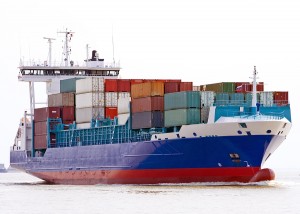06/28/12: Has the International Ship and Port Facility Security Code (ISPS Code) prevented the expansion of organized crime, and reduced the threat to maritime shipping and to society by extension?
Activity in US ports and major regional ports such as Australia and Canada suggest a mixed picture.
In some ways, the presence of organized crime in maritime ports bodes well for the war against terrorism and weapons of mass destruction (WMD) movements, which was the original intent of the ISPS Code.
Organized criminals might seek to infiltrate government and commercial business and seek change from the inside in order to facilitate the trafficking of narcotics, arms or humans, but they rely on the same port facilities that also support legitimate commercial maritime logistics. In short, they do not seek political influence by means of terrorism’s destructive ‘Pyrrhic victory’.
Although the presence of organized crime alongside legitimate cargo is nothing new, the level of security within ports has increased since the introduction of the ISPS Code.
But the use of shipping as a method to traffic arms, humans and illicit drugs is also increasing as cargo volumes increase.
Along with an expansion of narcotics, arms and human trafficking, comes money laundering and corruption; criminal groups exploit areas of the legitimate, transport logistic chain because there are often individuals who are willing to operate in both legal and illicit domains.
A US report points to transnational criminals using infiltration of government security services to facilitate crime, and cyber technologies to conduct mass fraud. Shipping ports have traditionally seen insider involvement with criminal elements in one form or other.

But the involvement of new actors, especially since the end of the Cold War in 1989, suggests that smuggling is of greater concern today.
Links to international investors and more adaptive, less centralized crime networks blurs the line. Before 1990, drug trafficking was considered a separate issue to terrorist activities before the involvement of non-drug producing actors, whose priority is profit, not principle.
Transnational organized crime has evolved over the years, expanding its reach and its scope of the types of illicit products.
For the rest of this article and related pieces in the new issue of Strategic Insights.
This issue highlights the impact of organized crime on maritime security.
Organized crime is a persistent threat to business continuity in numerous ports around the world. In the first article in this issue, counterterrorism efforts under the ISPS Code and whether the tools in the Code have been effective against organized crime are examined.
Despite fears of collusion, organized criminal groups rely on the regular functioning of maritime commerce to hide their illegal activities. To date, though, the focus on terrorism has prevented a holistic approach to port security that effectively targets organized crime.
Drug smuggling is one such component of organized crime.
The second article in this issue looks at the evolution of drug smuggling in the Caribbean and South American regions. Recently, there has been a new focus on routes through Central America to the US, as well as the use of semi-submersible craft.
The West African region is currently at the forefront of maritime security concerns and two reports by Risk Intelligence analysts consider recent developments of interest.
Firstly, last year saw an upswing in attacks in the Bight of Benin against tanker vessels in particular, forcing Benin and Togo to take more of an interest in their maritime security. Despite their efforts, interest from companies in the area in private security is growing.
Secondly, the situation in Senegal and its impact on maritime security is examined.
The final article in this issue returns to port security and considers the threat of cargo theft in Europe. The report from Risk Intelligence analysts examines the current and anticipated state of this challenge.


